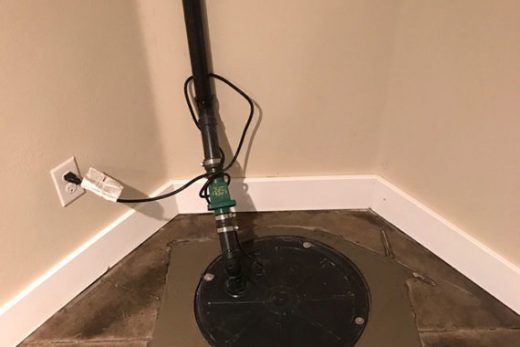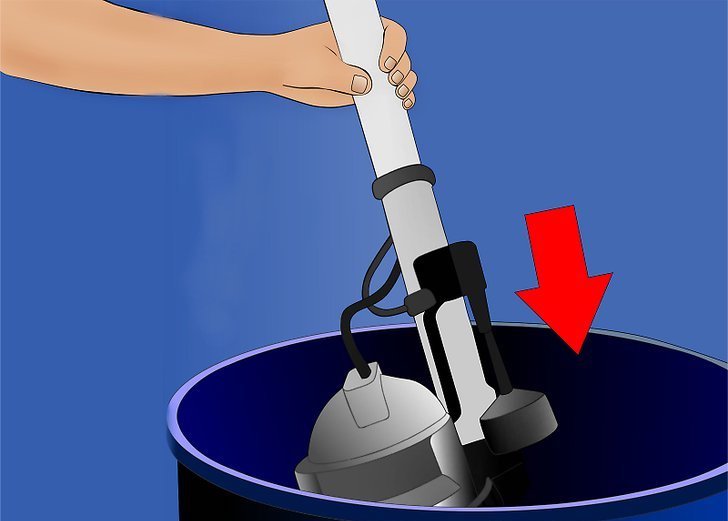Top Techniques for Cleaning a Sump Pump
Top Techniques for Cleaning a Sump Pump
Blog Article
This great article following next involving How to Care for Your Sump Pump is really informative. Don't skip it.

Sump pumps are essential elements in lots of homes, particularly in locations prone to flooding or extreme moisture. They assist prevent water damages by effectively removing excess water from basements or crawl spaces. Nevertheless, like any other device, sump pumps call for routine upkeep to ensure they function successfully when required the most. Cleansing your sump pump is a crucial part of its maintenance, and recognizing just how to do it correctly can save you from pricey repair work and potential calamities.
Intro
Preserving a tidy sump pump is important for its correct performance and durability. Neglecting this vital job can result in blockages, breakdowns, and inevitably, water damage to your home. Therefore, finding out just how to cleanse a sump pump is critical for homeowners who rely upon these tools to maintain their basements completely dry and protected.
Recognizing the Sump Pump
Before diving right into the cleaning procedure, it's necessary to have a basic understanding of just how a sump pump works. Normally installed in a pit or container below the basement flooring, a sump pump consists of a number of crucial parts, consisting of a pump, a float switch, and a discharge pipeline. When water builds up in the pit, the float button triggers the pump, which then pumps the water out through the discharge pipe, away from the structure's structure.
Indications of a Dirty Sump Pump
Knowing when your sump pump requires cleaning is critical for protecting against possible breakdowns. Some typical indicators that show a dirty sump pump consist of strange sounds during operation, reduced water flow, and noticeable debris in the pit. If you see any one of these signs, it's essential to cleanse your sump pump without delay to stay clear of any type of more concerns.
Getting ready for Cleansing
Before you begin cleaning your sump pump, it's important to take some safety preventative measures. Start by shutting down the power to the pump to prevent any kind of electric mishaps. In addition, wear appropriate protective equipment, such as handwear covers and goggles, to protect yourself from dirt, debris, and potential microorganisms.
Detailed Guide to Cleansing a Sump Pump
Turning off the Power
Begin by detaching the power supply to the sump pump to avoid any kind of accidents while cleansing.
Eliminating Debris and Dirt
Use a bucket or an inside story to remove any noticeable particles, dirt, or debris from the sump pit. Dispose of the particles properly to avoid it from obstructing the pump or the discharge pipe.
Cleaning the Pump and Drift Switch
When the pit is free from debris, carefully get rid of the pump from the pit. Examine the pump and the float button for any signs of damage or wear. Make use of a soft brush or fabric to clean up the surfaces and remove any built up grime.
Purging the System
After cleansing the pump and float button, flush the sump pit with tidy water to eliminate any type of remaining dust or sediment. This will certainly assist guarantee that the pump runs smoothly and efficiently.
Looking For Correct Functioning
Prior to reinstalling the pump, carry out a fast test to make sure that the float switch activates the pump appropriately. Pour some water into the sump pit and observe the pump's operation. If every little thing is functioning properly, you can rebuild the pump and reconnect the power supply.
Maintenance Tips to Maintain Your Sump Pump Clean
In addition to regular cleaning, there are a number of maintenance suggestions you can follow to keep your sump pump in optimal condition:
Conclusion
Cleaning your sump pump is a vital facet of its upkeep and makes sure that it operates properly when you require it one of the most. By adhering to the actions outlined in this guide and integrating regular upkeep into your routine, you can extend the life-span of your sump pump and protect your home from water damages.
6 STEPS ON HOW TO CLEAN A SUMP PUMP PROPERLY
UNDERSTANDING SUMP PUMPS
Your sump pump plays a crucial role in protecting your home by managing and removing excess water. It primarily functions as a “shield”, guarding your basement against the damaging effects of water accumulation. The pump is housed in a sump pit in the lowest part of your basement, and its job is to pump out any water that collects there.
During heavy rainfalls or when snow melts rapidly, water can infiltrate your basement, posing potential risks like flooding, structural damage, and harmful mold growth. Here, the sump pump springs into action, pumping out the intruding water and directing it away from your home.
SAFETY FIRST
Before cleaning, remember to prioritize safety. Disconnect the sump pump from the power source to prevent any accidental electric shocks. Also, wear sturdy gloves to protect your hands from any sharp or dirty components within the pump.
REMOVE THE SUMP PUMP
After ensuring your safety, the next step is to remove the sump pump from its pit. Doing this might require careful maneuvering as you don’t want to damage any pump components. Once removed, clean the sump pit to remove any accumulated debris or sludge.
INSPECT THE PUMP
Inspect the pump for any visible signs of wear or damage. Check the power cord, float switch, and impeller housing. If any components look worn out or damaged, consider replacing them to ensure optimal performance.
CLEAN THE PUMP
Thoroughly clean the pump with warm, soapy water. Make sure to rid it of any dirt, gravel, or other debris that might impede its performance. You can use a toothbrush to clean the small, hard-to-reach parts of the pump.
REINSTALL THE SUMP PUMP
Reinstall the pump into the sump pit Make sure it’s positioned correctly to remove the water effectively Once it’s back in place, reconnect it to the power source TEST THE PUMP
Finally, pour some water into the pit to ensure the pump works correctly. It should start automatically and begin pumping out the water; if it doesn’t, check the power source and the positioning of the pump.
Remember, while cleaning your sump pump is an essential part of home maintenance, hiring a professional plumber for a thorough inspection and cleaning at least once a year is also important. This will ensure that your pump is in optimal condition, ready to protect your home from potential water damage.
BEST PRACTICES FOR CLEANING SUMP PUMP DISCHARGE PIPES
Regular Inspection: Regularly inspect your discharge pipes, especially during heavy rainfall or snowmelt periods. Look for any signs of blockage or damage. Early detection of problems can prevent serious issues down the line. Periodic Cleaning: Over time, sediment and debris can accumulate in the discharge pipes, impeding the flow of water. Regular cleaning helps keep the pipes clear and functioning efficiently. You can use a high-pressure water jet to effectively clean the pipes. Insulation During Winter: In colder climates, discharge pipes can freeze, blocking the outflow of water. Protect your discharge pipes from freezing temperatures by insulating them with foam pipe insulation. This will ensure the sump pump can continue to discharge water even in freezing conditions. Proper Positioning: The discharge pipe should be positioned to direct water away from your home’s foundation. Improper positioning can lead to water seeping back into the basement. Ensure the pipe is long enough and angled correctly. Installation of a Check Valve: A check valve prevents water from flowing back into your sump pit after the pump has pushed it out. Installing a check valve helps maintain the efficiency of your sump pump and reduces the risk of flooding. Minimize Pipe Turns: Every curve or turn in the discharge pipe can decrease the efficiency of water flow. By minimizing turns and bends in your discharge pipe, you can increase the efficiency of your sump pump. https://www.fullspeedplumbing.com/how-to-clean-a-sump-pump-properly9999/

I ran across that content about Keep Your Sump Pump Clean, It'll Keep You Dry when surfing the internet. Sharing is good. One never knows, you could be doing someone a favor. Bless you for your time. Come back soon.
Call Today Report this page